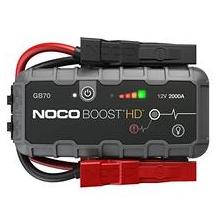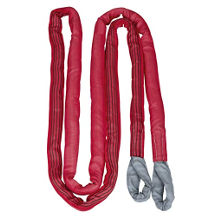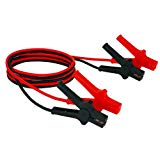Scissor jack purchasing advice: how to choose the right product
- What you need to know
- Jacks enable you to lift your car to change a tire or make some small repairs.
- You need to choose a jack that fits with your vehicle’s weight and dimensions.
- Scissor jacks are the cheapest kind, but you need a lot of strength to use them; hydraulic jacks are easier to use but more expensive.
- Don’t leave your car jacked up for too long because it will eventually sink – use undercarriage blocks and brake wedges for additional support.
- You don’t need to carry a jack with you in the car by law, but it is a good idea!
Raise the wheels
Whether you live somewhere where you need to swap between summer and winter tires, or you just don’t want to get caught short with a flat tire on the road, a jack is indispensable when it comes to changing your tires. Some cars come with jacks included in the trunk, but they are usually just basic ones for emergencies. If you’re on the road a lot or enjoy fixing your own car then buying a high quality jack is a great investment and a way to ensure you’ll be safer when you do need to jack your car up.
When buying a jack there are a few different styles to choose from: trolley jacks, scissor jacks, floor jacks, bottle jacks, and even balloon jacks. Compared to the jack that came from your car manufacturer, not all third-party jacks will be compatible with your vehicle. Make sure to check that the jack you want will fit the dimensions of your motor.
Buying tips
The main thing to consider when buying a jack is whether it will be compatible with your vehicle. Cars come in different shapes and sizes, so there are a range of different jacks available to suit any dimensions. Another thing to consider is how often you will be using your jack, as this will influence how much you should spend. The factors that differ between jacks are how you use them, how powerful they are, and what vehicles they can fit onto.

Capacity
Alongside dimensions, capacity is the main factor to consider when buying a jack. The capacity refers to how much weight a jack can hold. It is measured in tons. Most small and medium sized vehicles won’t weigh more than 2 tons. Vans and motorhomes need a jack that can hold between 20 and 30 tons.
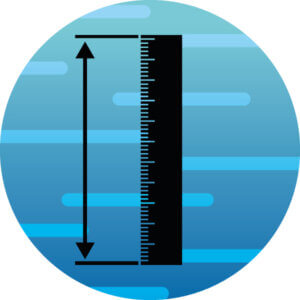
Lift height
Lift height varies from jack to jack. Most jacks are stepless, so each lift can be extremely precise. If you have a small car, a lift height of up to a foot (c.30cm) will be enough. Anything larger and you’ll want at least 16’’ (c.40cm).

Pickup height
The pickup height refers to the lowest possible height a jack can reach. This is measured from the floor to the top of the lift saddle. Jacks with extra low profiles can have a pickup height of 4’’ (c.10cm) or even a bit lower. These are especially for vehicles with low ground clearance and sports cars. Jacks with a pickup height of around 8’’ (c.20cm) are suitable for ATVs and vans.

Lifting mechanism
Lots of jacks work hydraulically via a lifting rod which moves a cylinder upwards. Scissor jacks on the other hand require more human effort: you have to turn a crank to adjust the height. Pneumatic jacks work using compressed air – they don’t require much effort and are mostly used in professional situations.

Test seal
Make sure that the jack you buy is tested for safety and has its quality approved. Different countries have different regulations, but often you’ll find a test seal which will confirm that the jack is safe to use.

Features
Any jack you buy should have a safety valve to prevent it from being overloaded. You can also use this valve to release the jack and lower your vehicle. Lifting levers come in different lengths, depending on the model. The longer the lever, the easier it is to lift your vehicle. There are a range of attachments you can put on the lifting saddle, such as non-slip rubber plates. Swiveling castor wheels are usually on maneuvering jacks – they make it easier to fit the jack underneath your vehicle.
Jack types
There are four main types of jack. Each have different advantages and disadvantages, and sit in different price brackets. The main types are inflatable jacks, scissor jacks, bottle jacks, and floor jacks.
Inflatable jacks
Inflatable jacks are simple devices that cost between $50 and $150. The more expensive models are designed to be used with heavy vehicles. Essentially, these jacks are sacks made from rip-proof material attached to a hose. They are very simple to use. All you have to do is put the jack under your car and connect the hose to your exhaust. Once you start your engine, the fumes will pump up the sack like a balloon and lift your vehicle up. You can only use these jacks if your vehicle only has one exhaust pipe, otherwise you could damage the engine.
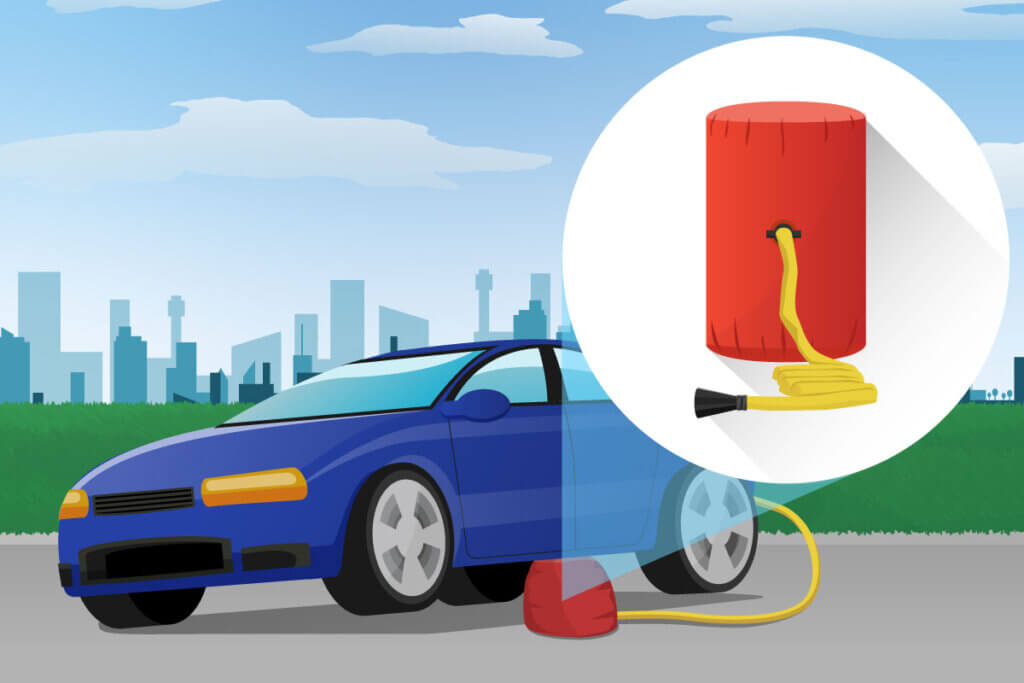
Inflatable jacks are especially good for roadside breakdowns because they are light and easy to store. They don’t require much effort to use, and work on uneven surfaces. If you are using one, you should also put your vehicle on blocks for extra security – inflatable jacks aren’t 100% stable. While you’re changing your tires, keep an eye on the jack in case it gets damaged and deflates. Make sure the seams aren’t torn and the hose is securely fastened on the exhaust. The most important thing to watch out for is that your vehicle isn’t over the weight capacity of the inflatable jack. These jacks are really best for when a standard jack won’t work. If you want to do additional work underneath your vehicle then you should go for a different style as these jacks aren’t as stable or safe.
Capacity: up to 3 tons
Lifting range: 0 to 2 feet (0-60cm)
Advantages
- Quick to set up
- No strength needed
- Light and space-saving
Disadvantages
- Easily damaged
- Hose can detach from exhaust pipe easily
- Not suitable for regular use
Scissor jacks
Scissor jacks are the cheapest and simplest type of jack on the market. These light and compact tools can cost between $10 and $20, although more expensive models will be closer to $70. They are great for breakdowns because you can quickly set them up.
Scissor jacks are diamond shaped, with one corner resting on the ground. The whole jack is held together by a thread which connects the two outer edges of the diamond. The thread has a crank on one end, and when you tighten it, the joints forming the diamond shape get pulled together which raises the jack. Scissor jacks do not work hydraulically, which means they require a lot of effort. Turning the crank yourself to lift the vehicle can get quite exhausting. There are some motorized scissor jacks on the market – you have to power them via your vehicle’s cigarette lighter or another external power source.
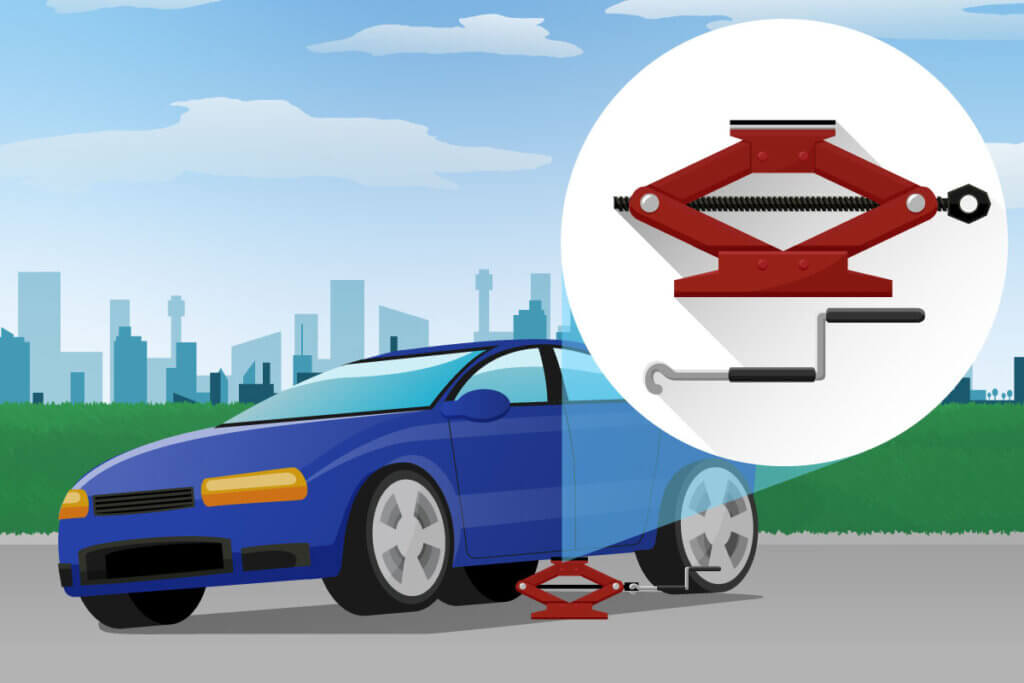
Scissor jacks’ diamond-shaped design means they have an extremely low pickup height. Usually, scissor jacks have a lifting height of about one foot (c.30cm). Their weight capacity is usually quite low – around 2 tons – so they’re only really good for small and medium sized vehicles. Scissor jacks are designed for longer home mechanic sessions because their design prevents the car from lowering.
Jackscrews, or screw jacks, are a close relation to scissor jacks. You’ll often find them in car breakdown kits. Instead of having a diamond-shaped design, they just have one axle which gets extended with a crank. Screw jacks aren’t as stable as scissor jacks, but they take up less space.
Capacity: up to 1.5 tons (electric models up to 2 tons)
Lifting range: 4 to 14 inches (10-35cm)
Advantages
- Extremely compact and light
- Quick to set up
- Very flat
- Affordable
- Stable
Disadvantages
- Needs a lot of strength
- Relatively low weight capacity
- Low lifting height
Floor jacks
Also known as trolley jacks, floor jacks can be as cheap as $20. Professional models for mechanics cost between $100 and $300. Floor jacks work hydraulically: the lever actuates a pump which raises the lifting saddle. There is a valve to release the pressure and lower the vehicle – this can also be done via the lever.
The main advantage of floor jacks is their maneuverability. They sit on four wheels, two of which are fixed and two are swiveling castors. Wheels aren’t just good for positioning the jack, they’re also essential for transport: floor jacks weigh between 33 and 66 pounds (15-30kg). Thanks to this weight and their design, floor jacks are extremely stable and secure.
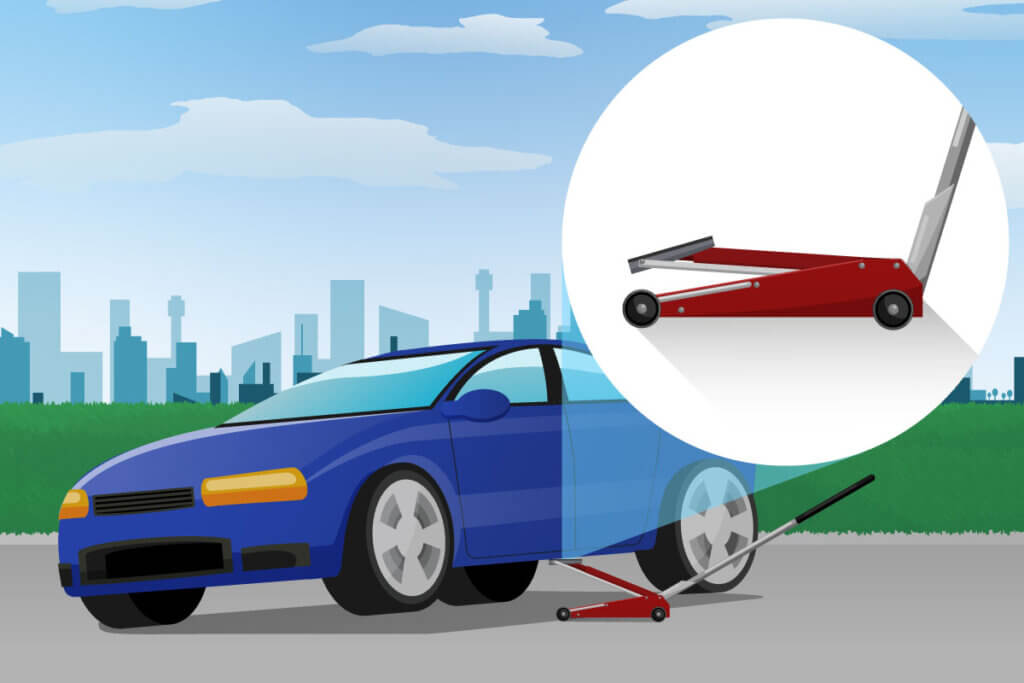
Floor jacks are extremely flat when they aren’t extended which makes them suitable for vehicles with low ground clearance. Weight capacity can be a bit low, and if you’re going to be working on your vehicle for a long time watch out because over time the lifting height will lower gradually when in use. Using blocks for safety is always a good idea when using a jack. Floor jacks are very easy to use and don’t require much strength. Since they’re so heavy, they aren’t really good to take around with you – better to keep it at home.
Capacity: 2 to 4 tons
Lifting range: 4 to 31 inches (10-85cm)
Advantages
- Don’t require much strength
- Easy to maneuver
- Considerable lifting height
- Stable
Disadvantages
- Just for home use
- Take up a lot of space
- Gradually decreases in height during use
Bottle jacks
Bottle jacks are in general the most powerful jack variety. They can either be hydraulic or pneumatic. They work using a piston that extends upwards from inside a cylinder to lift your vehicle. Hydraulic jacks have a lever that you pump to raise the piston via internal pressure – pneumatic jacks are the same except you don’t need to pump as much. Bottle jacks are very compact, so they’re great for storing in your vehicle. At the same time, their design means that they aren’t the most stable – don’t use a bottle jack for extended mechanic sessions. To help with stability, you can use a plank between the floor and the jack.
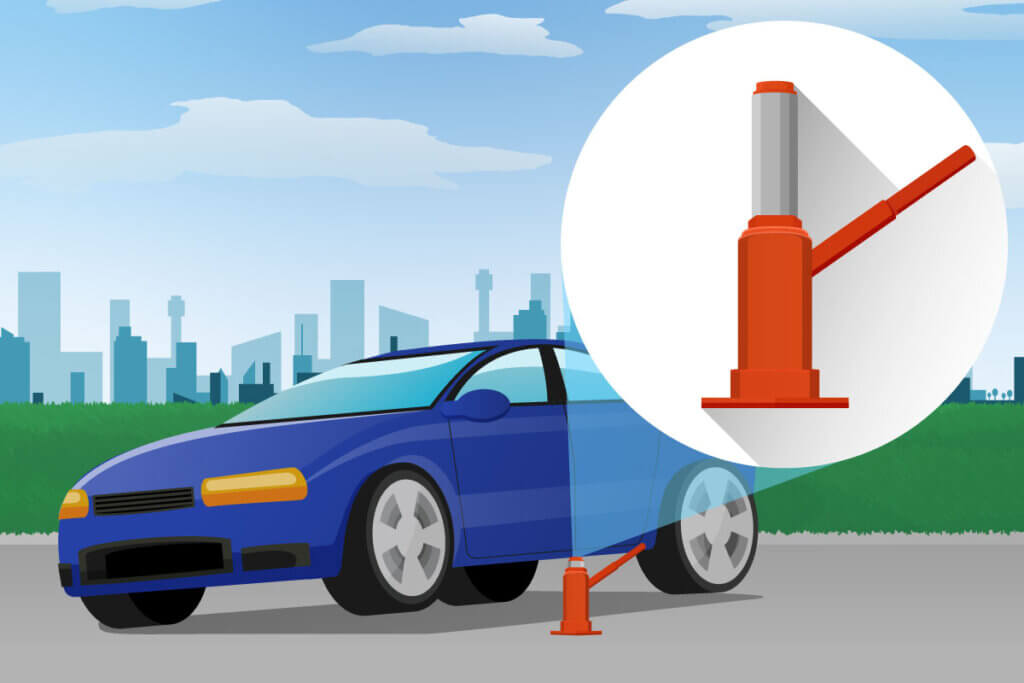
Bottle jacks have a large weight capacity. They can lift at least two tons – in fact, top-line models can lift up to 30 tons! You can extend the lifting height by cranking a thread too. Jacks with a capacity of two tons cost around $20 – they’re great for small cars. Professional pneumatic bottle jacks cost well over $100. Since they can carry so much weight, they are a good option for lifting motor homes and SUVs. The main thing to watch out for is that a bottle jack won’t fit every type of vehicle. If you have a van, make sure to check the lift height before buying.
Capacity: 2 to 30 tons
Lifting range: 6 to 20 inches (15-50cm)
Advantages
- Large weight capacity
- Considerable lifting height
- Very compact
Disadvantages
- Large pickup height
- Not very stable
How to use a jack
Your number one priority when using a jack should always be safety. Before you lift your vehicle, check that the jack is working properly and is stable – you don’t want to damage anything. Unless you’re using an inflatable jack, make sure that your vehicle and your jack are both on flat surfaces. Put the handbrake on (or if you have an automatic put it in parking mode) to prevent your vehicle from moving. As a precaution, put wedges under the tires and a plank under the jack to prevent any potential movement. If your jack falls over or gives way, you’ll thank yourself for placing an extra support block in once you’ve lifted your vehicle.
Usually cars have a reinforced notch on the underbody between the front and rear wheels. Position the jack there; do not use the device at the rear or front. Use a rubber support plate to protect the paintwork and the bodywork. Ideally, the lifting saddle should fit exactly onto this notch.
Safe use
Once you’ve bought the right jack for your vehicle, the last thing to note is that jacks aren’t really designed for working under your vehicle.
Working underneath your vehicle
Jacks are suitable for changing your tire and quickly checking things in the wheel base or under the chassis. However, you shouldn’t use a jack if you’re wanting to work for an extended period under your vehicle as they aren’t safe enough. The safer alternative is to use a car ramp. Using a ramp in conjunction with wheel wedges is the most secure option if you’re working underneath your vehicle. Car ramps aren’t suitable for changing your tires because the wheels aren’t free in the air. Car ramps are designed for working at home in your garage or on your driveway.
Do you always need to carry a jack with you?
There’s no law to say you should carry a jack in your vehicle along with your breakdown kit. However, car manufacturers will include a jack if there’s a spare wheel. A lot of modern cars don’t actually come with a spare wheel anymore. Instead, a lot of cars now come with a tire repair kit. This is basically a special foam that you put in the broken tire. The foam spreads out and makes it possible to drive to the nearest garage where you can get a new tire.
Images 1-10: © FinalCheck

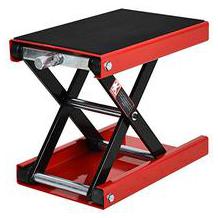
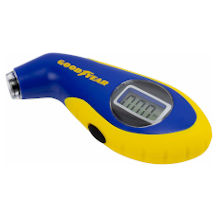
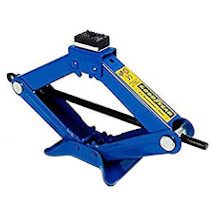


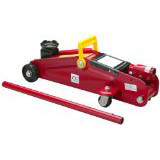
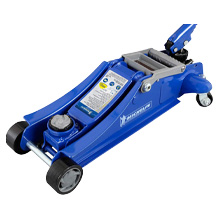
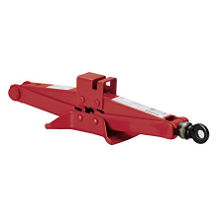
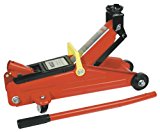
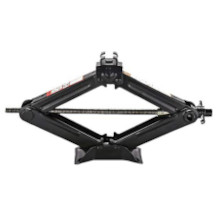
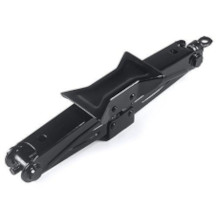
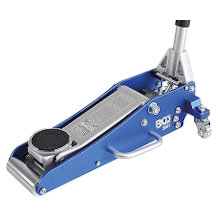
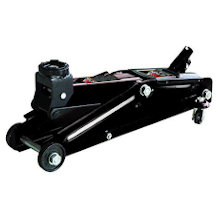
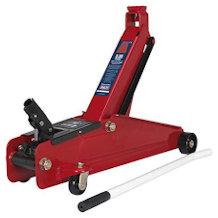

 6,225 reviews
6,225 reviews
